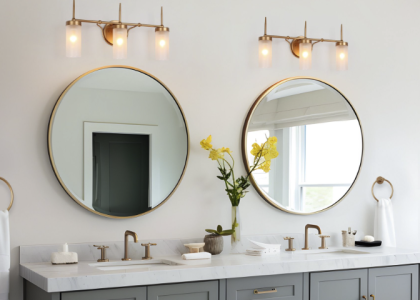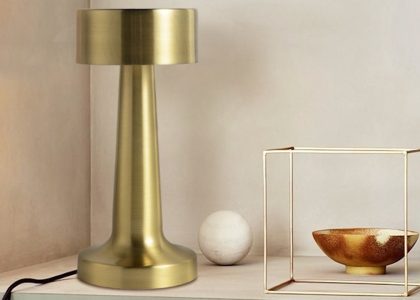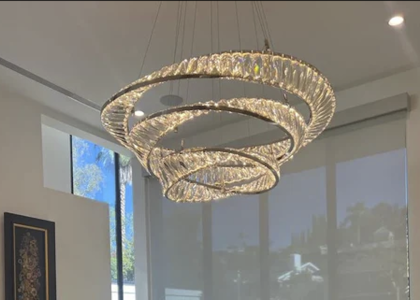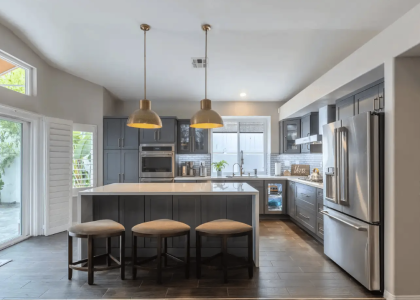Proper lighting in a study room is essential for creating an environment conducive to learning, concentration, and productivity. Adequate illumination helps reduce eye strain, improve focus, and enhance overall well-being. Conversely, poor lighting can result in headaches, fatigue, and decreased motivation.
When designing a study space, it is important to consider various lighting types and their optimal placement to create a balanced and comfortable atmosphere. Good lighting Lugolo is crucial for maintaining proper posture and preventing eye strain during extended study sessions. Insufficient illumination can cause squinting, leading to discomfort and headaches.
Conversely, excessive light can produce glare and reflections on screens and paper, hindering concentration. By carefully selecting and positioning lighting fixtures, one can create an environment that promotes comfort and productivity. The right lighting setup can also contribute to the aesthetic appeal of a study room, making it a more inviting and enjoyable space.
With proper illumination, a study area can be both functional and visually appealing, fostering an atmosphere conducive to learning and concentration. This is beneficial for students, professionals working from home, and anyone who enjoys reading and learning.
Types of Lighting for a Study Room
Ambient Lighting: Setting the Mood
Ambient lighting provides overall illumination for the room and sets the mood. It includes overhead fixtures or ceiling lights that provide general illumination for the entire room, setting the overall tone and brightness level of the space.
Task Lighting: Focused Illumination
Task lighting is essential for providing focused light for specific activities such as reading, writing, or using a computer. This can include desk lamps, floor lamps, or under-cabinet lighting for work surfaces. Task lighting should be adjustable to accommodate different tasks and provide adequate illumination without causing glare or shadows.
Accent Lighting: Adding Visual Interest
Accent lighting is used to highlight specific features or objects in the room, adding depth and visual interest. This can include wall sconces or picture lights that highlight artwork, bookshelves, or other decorative elements in the study room. By combining these different types of lighting, you can create a well-balanced and versatile lighting scheme that meets the needs of various activities in the study room.
Choosing the Right Bulbs for Your Study Room
Choosing the right bulbs for your study room is essential for achieving the desired level of brightness, color temperature, and energy efficiency. There are several types of bulbs available, each with its own unique characteristics and benefits. Incandescent bulbs are traditional and provide warm, soft light, but they are not very energy-efficient.
Halogen bulbs are similar to incandescent bulbs but are more efficient and have a longer lifespan. Compact fluorescent lamps (CFLs) are energy-efficient and come in a variety of color temperatures, making them suitable for different tasks. Light-emitting diode (LED) bulbs are highly energy-efficient, long-lasting, and available in various color temperatures and dimmable options.
When choosing bulbs for your study room, consider the color temperature of the light. Cool white light (4000-5000K) is ideal for tasks that require focus and concentration, such as reading and studying. Warm white light (2700-3000K) is better suited for creating a cozy and inviting atmosphere for relaxation or casual reading.
Additionally, consider the brightness level of the bulbs to ensure that they provide adequate illumination without causing glare or discomfort. LED bulbs are a popular choice for study rooms due to their energy efficiency, long lifespan, and versatility in color temperature and dimmable options. By selecting the right bulbs for your study room, you can create a comfortable and efficient lighting environment that meets your specific needs.
Positioning and Placement of Lights in a Study Room
The positioning and placement of lights in a study room play a crucial role in creating an environment that is well-lit and comfortable for various activities. When positioning lights, it’s important to consider factors such as glare, shadows, and the specific tasks that will be performed in each area of the room. For example, when placing overhead fixtures or ceiling lights, ensure that they provide even illumination without causing glare on screens or reflective surfaces.
Task lighting should be positioned to provide focused light on work surfaces without casting shadows or causing discomfort. When positioning lights in a study room, consider the layout of furniture and work areas to determine the most effective placement for each type of lighting. Desk lamps should be positioned to provide direct light on reading materials or work surfaces without causing glare or shadows.
Floor lamps can be used to provide ambient or task lighting in specific areas of the room where additional illumination is needed. Additionally, consider using dimmer switches or adjustable fixtures to customize the brightness level of the lights based on the time of day or specific tasks being performed. By carefully positioning and placing lights in a study room, you can create a well-lit and comfortable environment that enhances productivity and concentration.
Incorporating Natural Light into Your Study Room
Incorporating natural light into your study room can have numerous benefits for both physical and mental well-being. Natural light has been shown to improve mood, increase productivity, and reduce eye strain. When designing a study room, it’s important to maximize natural light by strategically placing windows, using light-colored window treatments, and arranging furniture to allow natural light to penetrate the space.
By incorporating natural light into your study room, you can create a bright and uplifting environment that promotes comfort and focus. Maximizing natural light in a study room can be achieved by strategically placing windows to allow for ample sunlight throughout the day. Light-colored window treatments such as sheer curtains or blinds can help diffuse natural light while still providing privacy and control over brightness levels.
Additionally, arranging furniture such as desks and reading areas near windows can help maximize exposure to natural light while minimizing the need for artificial lighting during daylight hours. Natural light not only provides illumination but also creates a connection to the outdoors, which can have a positive impact on mood and overall well-being. By incorporating natural light into your study room, you can create a bright and inviting space that enhances concentration and productivity.
Using Task Lighting for Specific Study Areas
Key Considerations for Task Lighting
When selecting task lighting, it’s essential to consider factors such as brightness level, color temperature, adjustability, and placement to ensure that it effectively supports various tasks without causing discomfort or glare.
Choosing the Right Type of Task Lighting
Desk lamps are commonly used for providing task lighting on work surfaces, while floor lamps or under-cabinet lighting can also be used to illuminate specific areas where additional light is needed. Consider the specific tasks that will be performed in each area to determine the most suitable type of lighting and placement.
Customizing Task Lighting for Optimal Productivity
By using task lighting effectively in specific study areas, you can create a well-lit environment that supports concentration and productivity. Consider using LED task lights with dimmable options to customize the brightness level based on individual preferences and specific tasks being performed.
Creating Ambiance with Decorative Lighting in Your Study Room
In addition to providing functional illumination, decorative lighting can be used to create ambiance and visual interest in a study room. Decorative lighting fixtures such as wall sconces, pendant lights, or chandeliers can add personality and style to the space while enhancing its overall aesthetic appeal. When choosing decorative lighting for a study room, consider factors such as scale, style, placement, and how it complements the existing decor to create a cohesive and inviting environment.
Decorative lighting fixtures can serve as focal points in a study room while adding warmth and character to the space. Wall sconces can be used to highlight artwork or architectural features while providing ambient illumination. Pendant lights or chandeliers can add drama and elegance to the room while providing overall illumination with style.
When choosing decorative lighting fixtures, consider the scale of the room and the height of ceilings to ensure that they complement the space without overwhelming it. Additionally, consider how decorative lighting integrates with other types of lighting in the room to create a cohesive and balanced environment that meets both functional and aesthetic needs. By incorporating decorative lighting into your study room, you can create an inviting and visually appealing space that enhances comfort and enjoyment while studying or working.
In conclusion, proper lighting is essential for creating a study room that is conducive to learning, concentration, and productivity. By carefully considering the different types of lighting available and their specific characteristics, you can create a well-balanced environment that meets your individual needs while enhancing comfort and visual appeal. Whether you’re designing a study room for academic pursuits or professional work from home, incorporating natural light, using task lighting effectively, and adding decorative lighting can help create an inviting and functional space that supports your goals and enhances your overall experience.





